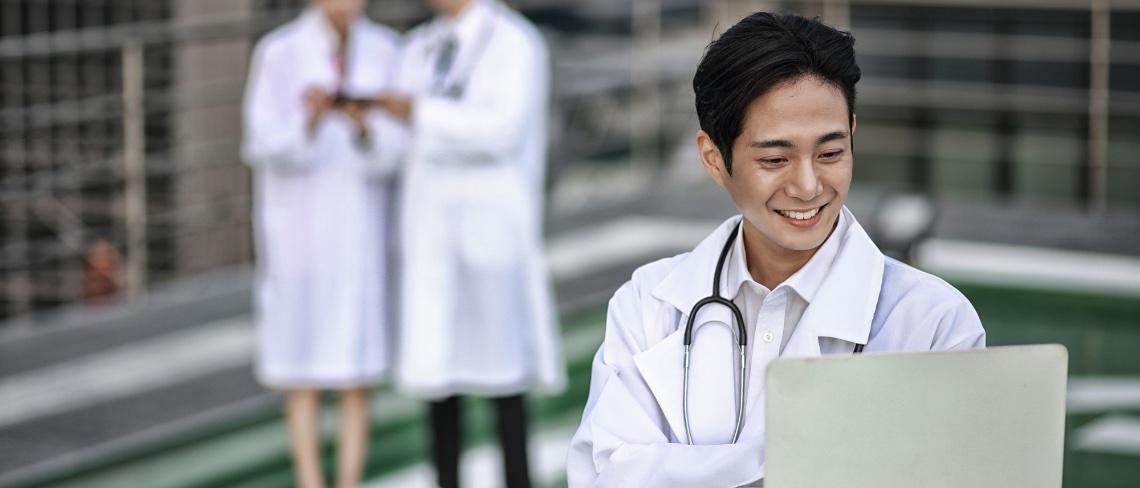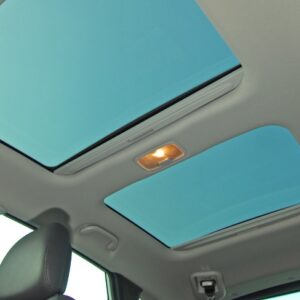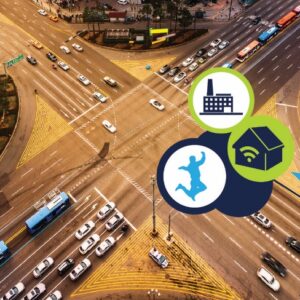To improve the accessibility of our content, please find the audio version of this blog post.
What happens when undergraduate students from University College London (UCL) get their hands on ST development kits? Two projects with the potential of saving lives and improving health care. We recently sat down with Dr. Terence Leung, who teaches at UCL’s Department of Medical Physics and Biomedical Engineering. He was with Susana Zhou and Katherine Train, two of his students who completed summer projects during an internship in partnership with ST. Let us, therefore, explore how the resulting designs broke new grounds and what the overall experience can teach the industry.
Table of Contents
Project 1: Lower Limb Assessment (SensorTile.box)
The First Deep Edge AI Enabled Automated Sit-Stand Test
The first project, from Susana Zhou, is a motion-sensing apparatus designed to automate sit-stand tests. The exercise measures how many times within 30 seconds a patient can sit on a chair and then stand. Medical professionals traditionally administer the test to older adults to gauge their lower limbs’ strength and overall balance. The test itself may be tedious because the specialist must watch the subjects to evaluate their performance while timing them. Indeed, the patient must repeat the procedure over a period of time. Hence, Susana’s project is hugely useful to specialists because it offers a simple mechanism to automate the process and alleviate the need for supervision.
From the SensorTile.box to Medical Professionals
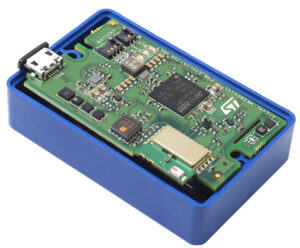
The system uses a SensorTile.box to measure movements and communicate the results over Bluetooth. Susana used the finite state machines and machine learning core of the LSM6DSOX to increase efficiency and recognize the patient’s movements. Hence, the system can immediately report to the health care professionals instead of waiting for a cloud to compute the results. Theoretically, the device can also recognize more movements than sitting and standing, such as walking or running. It can thus offer a more detailed analysis of a patient’s health and recovery. Susanna used STM32CubeMX and STM32CubeIDE to create the application and the Unico-GUI to configure the LSM6DSOX. She also utilized the STBLESensor mobile app to get information from the SensorTile.box.
Overcoming the Next Frontier: Data Collection
The project demonstrated tremendous potential. Hence, Dr. Leung explained that the university would keep working on Susana’s system. Currently, the greatest challenge is collecting data from healthy and recovering patients to create more accurate machine learning applications. The team plans to use the SensorTile.box to gather this information and expand their database. Too often, engineers underestimate what they can accomplish with the machine learning core and finite state machines of the LSM6DSOX. Susana’s project is proof that the industry barely cracked the surface of what’s possible, and we can’t wait to see what University College London does after it collects more data.
Project 2: Electronic Stethoscope (BlueCoin)
Pros and Cons of Today’s Stethoscopes
The second project, from Katherine Train, is an electronic stethoscope that would cost a fraction of today’s prices. While many health practitioners still use traditional acoustic tools for auscultations, electronic models are gaining in popularity because they enable machine learning applications. Computers can help doctors confirm a diagnosis. Additionally, an electronic stethoscope can detect abnormalities to the heart or murmurs that electrocardiograms tend to miss. However, electronic stethoscopes cost hundreds of dollars and still require a specialist. Moreover, the recent pandemic highlighted the limitations of current tools. Indeed, listening to a stethoscope is significantly more challenging when wearing protective equipment.
4 Microphones and Running a Neural Network for Less Than $100
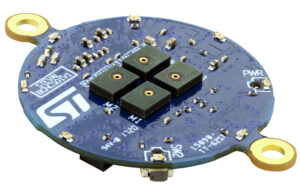
Katherine decided to take a completely different approach by using the BlueCoin starter kit to record heart sounds. The development board includes four MP34DT06J MEMS microphones with a sensitivity of –26 dBFS ± 1 dB, and an amplifier. To ensure that the BlueCoin stays on the patient’s chest, she also designed a case that she 3D printed. The cost of the overall solution is thus well under USD100, while the ability to use four microphones opens the way to more accurate diagnoses. At the end of Katherine’s project, the board could record the heart sounds onto an SD card. She then took the files and passed them through a neural network running on a computer.
The Need for More Data and Greater Bandwidth
The project is promising because a student with no experience in machine learning created a neural network capable of processing the BlueCoin’s recordings. Hence, it’s easy to imagine inexpensive models worn for long-term monitoring. Similarly, such a system would help detect heart problems in low- and middle-income countries with little access to advanced medical facilities. The challenge is now to collect enough data to create a neural network capable of reliably detecting murmurs and other conditions. Students will also have to solve the wireless bandwidth problem to stream all four recordings instead of saving them to a memory card.
New Enthusiasm and Collaborations with ST
Seeing these initial results, experts at ST analyzed the project further. Our teams converted the neural network using X-CUBE-AI to run it on the BlueCoin’s STM32F4 microcontroller. Once the process was over, inference operations took only 1.385 ms, and the code required only 1.72 KiB of RAM and 71.3 KiB of Flash. Our teams also estimate the power consumption at only 32 µA on an ultra-low-power MCU running at 80 MHz. The process didn’t include pre- or post- signal processing, which would be the next challenge for a real-world application. Regardless, Katherine’s project fired up ST’s experts who wanted to contribute to it, thus showing the incredible power of collaboration.
1 Lesson from University College London or the Importance of Working with Academia
The two projects are a powerful testimony of why it is critical to work with academia. It is too easy to ignore or dismiss initiatives like the ones from University College London. However, just like Professor Kaiser before him with his capstone projects, Dr. Leung shows that there’s so much innovation and potential from students and faculty. ST worked closely with Susana and Katherine to provide technical support and regular assistance. In return, it is gratifying to see how they both used our technologies in such unique ways and with such lofty goals in mind. Hence, we hope that these two stories will encourage every company in the industry to work more closely with their local schools and universities.


